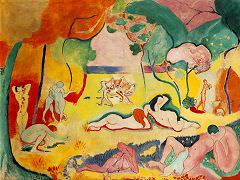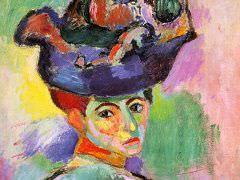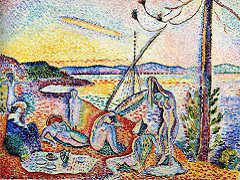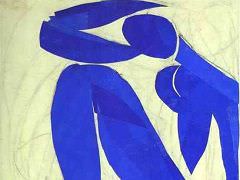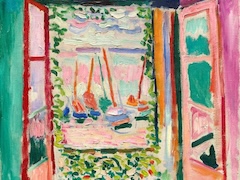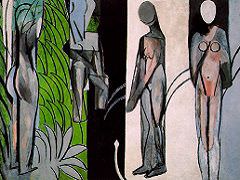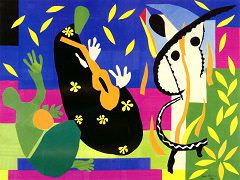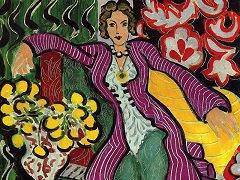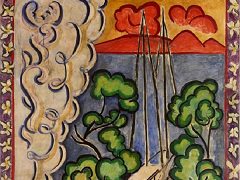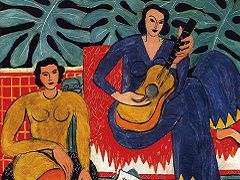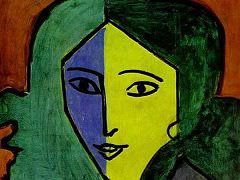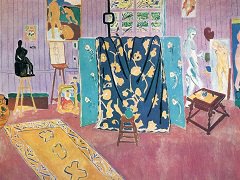View of Notre-Dame, 1914 by Henri Matisse
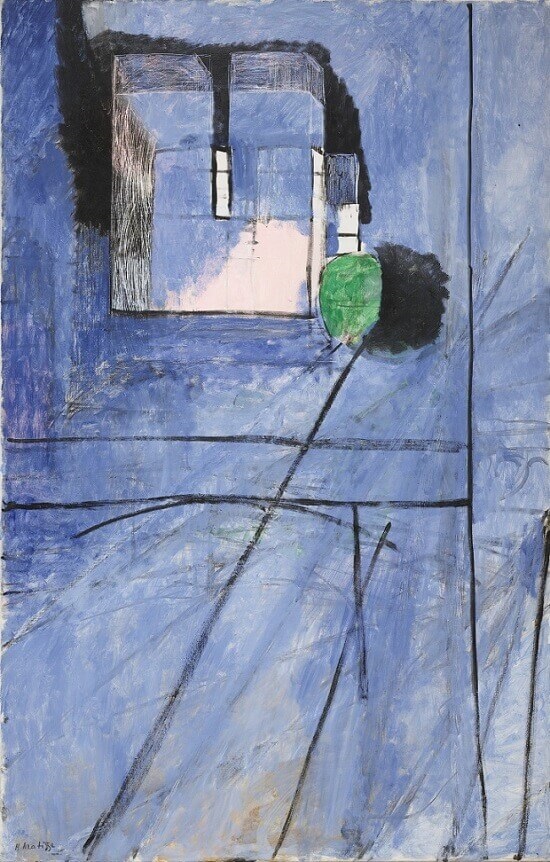
On 3rd August, 1914, the First World War broke out. Matisse was in Pans, and was terrified. The family home was destroyed in the German attack, and Matisse could get no news of his mother, who was confined to Bohain, or of his brother, who had been taken away by the Germans along with all the other menfolk of the village. He wrote to Purrmann:
This war has conferred a seriousness on the lives even of those who are taking no part in it, if they can imagine the feelings of a simple soldier who loses his life without quite knowing why, though he feels the sacrifice is right."
The effect the war had on Matisse's art can only be grasped if we consider the stringent colour scale that is characteristic of his work during the war years, and the increased tendency to simplification (which, it is true, had long been present). In 1914 the streamlining of forms into geometrical basics such as squares, rectangles, circles and ovals peaked, and continued through 1916. It cannot be coincidental that the painting which shows his geometrical simplification at its most extreme is the View of Notre-Dame.
This painting is the culmination of a long series of views Matisse did from the fifth floor of the house in the Quai Saint-Michel. They were done from the window, and the right-hand jamb appears as a vertical in the picture. Together with the diagonal lines, which imply depth, the verticals and horizontals add up to an abstract structure on a blue ground, the effect of which is intensified by the green bush. It is as if Matisse were seeking refuge from the real world in the geometry of the church.

